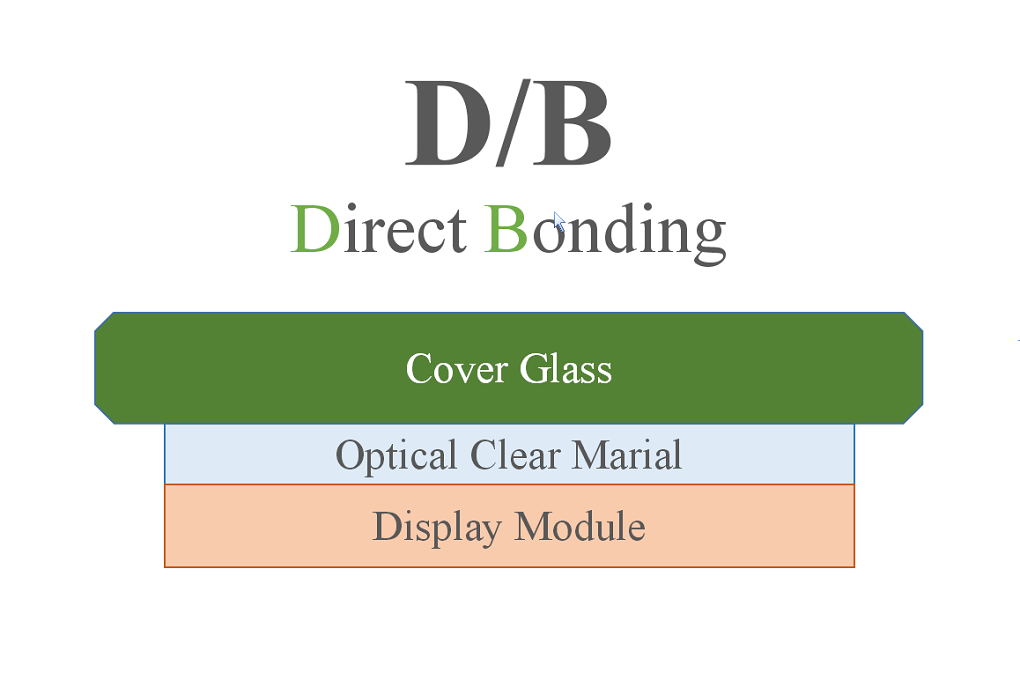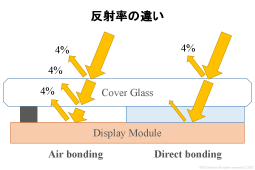About direct bonding
What is direct bonding?
When stacking a cover glass or touch panel on a display, if an air layer is sandwiched between them, the interfacial reflection between the air layer and the panel will reduce the brightness of the display and increase the reflectance, resulting in deterioration of the appearance. In particular, when it is not lit or when it is displayed in black, reflection by external light increases, so black floats and the contrast deteriorates, and the difference from bezel printing becomes noticeable, resulting in deterioration of quality.

In order to improve this appearance, direct bonding is the process of removing the air layer between the display and the cover glass or touch panel. Instead of the air layer, it is filled with a transparent resin with a refractive index close to that of the display or cover material (glass, acrylic, etc.) so that there is almost no interface optically. For this reason, direct bonding is also called optical bonding (optical bonding) or optical direct bonding.

Types of direct bonding
Direct bonding can be roughly divided into two methods depending on the material of the adhesive layer. These are OCA (optical transparent double-sided tape) and OCR (optical transparent resin). Each has advantages and disadvantages, so we will use them properly according to the product.
We can process not only display devices but also direct bonding of various parts.
We support small-scale trial production, such as when you want to try only one piece in the appearance evaluation, so please contact us by phone or inquiry form.
Effect of direct bonding
As explained at the beginning, the purpose of direct bonding is to improve visibility by performing optical bonding.
How effective will it be?

The figure is a schematic diagram of a comparison of reflectance between direct bonding and sandwiching an air layer.
Glass and air have different refractive indexes, resulting in about 4% interfacial reflection.
In direct bonding, the incident external light is reflected by the outermost surface and the display surface of the display.
Most of the display surface is black (normally black) due to polarizing plates and black masks, and the reflectance is about 4%.
On the other hand, in the case of an air gap, there are two air / glass interfaces and one air / display interface. Since each has about 4% reflection, the total reflectance is about 12%.
This difference is the difference in visibility between direct bonding and the air gap.
Furthermore, it is possible to reduce the reflection on the outermost surface by applying AR treatment to the surface of the cover material or attaching an AR film.
In the case of an air gap as well, in order to reduce the reflection of the air layer interface on the inner surface, we may aim to improve visibility by using AR or moth-eye structure.
We can also handle the laminating of AR film and moth-eye film, so please feel free to contact us by phone or using the inquiry form.
